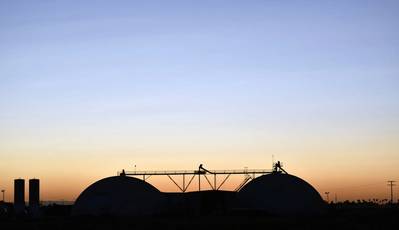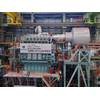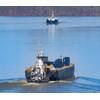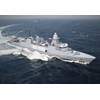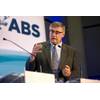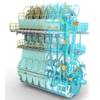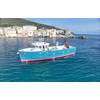Ammonia Advances
Taking a well-to-wake approach to CO2 emissions means that the shipping industry will look beyond emerging engine technologies such as dual-fuel ammonia engines when considering the viability of alternative fuels.
Engine manufacturers are optimizing combustion and reducing pilot fuel requirements, but any pilot diesel requirements mean the process is not 100% carbon free.
This week, Hanwha Power Systems, Hanwha Ocean and Baker Hughes announced a different concept. The companies agreed to design and produce low carbon ammonia gas turbines capable of 100% ammonia combustion. The systems are expected to be ready by 2028.
That still leaves the question of the emissions generated in the production of ammonia - will green ammonia be available for shipping’s decarbonization?
The answer to that is changing, largely in response to the quest for green fertilizer rather than green fuel.
Ammonia is the most widely produced chemical in the world today, and it is also the highest source of greenhouse gas emissions compared to other chemical production processes. The push for greener agriculture is fostering change.
The standard method for making ammonia is the Haber-Bosch process, which was developed in Germany in the early 20th century. It’s a high-pressure high-temperature process. Developments in catalyst technology are improving efficiency, and green production methods using renewable energy are expanding.
There’s also a new process under development. Researchers at MIT are developing a geological process that uses subsurface pressures and temperatures to create ammonia – cleaning up waste water in the process.
The trick the team devised is to inject water underground into an area of iron-rich subsurface rock. The water carries with it a source of nitrogen and particles of a metal catalyst, allowing the water to react with the iron to generate clean hydrogen, which in turn reacts with the nitrogen to make ammonia. A second well is then used to pump that ammonia up to the surface.
The shipping industry is increasingly optimistic about developments. This week, Hapag-Lloyd announced that it has secured long-term financing for 24 large ammonia-ready container ships with a combined capacity of 312,000 TEU.
GTT, COSCO Shipping LNG Investment (Shanghai) and COSCO Shipping Heavy Industry signed an agreement for the construction of various tankers which includes using LNG and ammonia as fuel for VLCCs.
And also this week, Amogy announced the opening on office in South Korea – home to three of the world’s largest shipyards. The company has developed a chemical reactor for splitting liquid ammonia into hydrogen and nitrogen for use onboard ships. In September 2024, it completed its latest demonstration, sailing the world’s first carbon-free, ammonia-powered maritime vessel.



